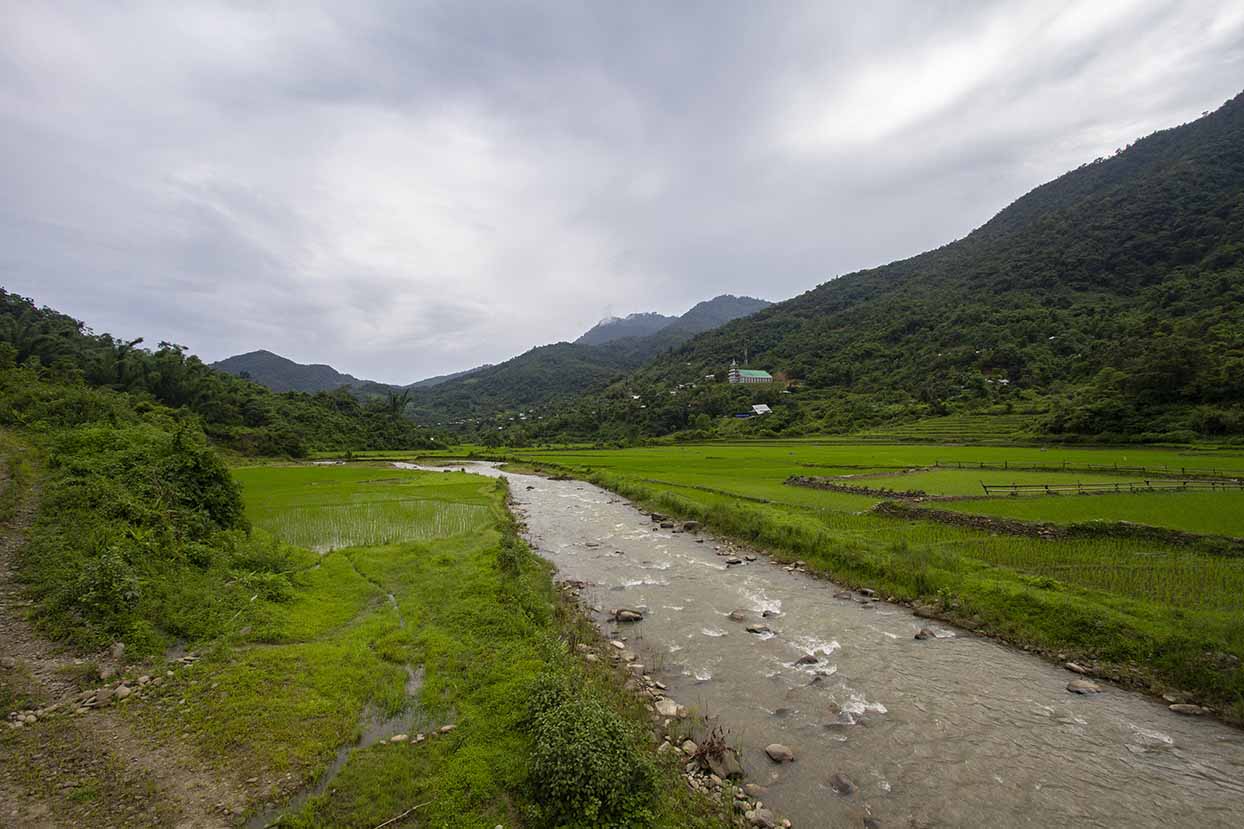Just how did the hill-valley divide in Manipur come to be so bitter. It is imaginable there would have been differences for a long time before the advent of the modern era, determined largely by geography. However, once upon a time, these differences would have been seen as natural as destiny, with nothing to grudge each other. Those who settled in the valley would have come to live in a more sophisticated economy, powered by their fertile, well-irrigated flatlands, and the food production surpluses this resulted in. It is not for nothing that chroniclers of the evolution of human societies are in agreement that the reason some societies advanced far ahead of others, depended on how successful each have been in the domestication of plants leading ultimately to their own Agricultural Revolutions. On the small Manipur canvas too, the differences between the valley and hills, in those days would have been seen just a matter of fortitude and nothing really to blame or credit anyone. They must have been different, they must have also occasionally fought, but the blame game for one’s misfortunes on others that have become commonplace today would have made little sense then.
Today this equation has transformed. With the advent of modern statehood, and Manipur becoming a part of a much larger Indian national economy, the state no longer is compelled to live within its means, and as is human nature, it does not seem to want to either – if something can be had for free, why work for it. The state annual budgets are a testimony of this. This year for instance, Manipur’s own tax and non-tax receipt is just about Rs.3000 crores. Probably this can be doubled or tripled with better revenue administration, but the attitude is one of “who cares”, presuming the Centre will never narrow down the fund inflow channel of the state. Hence, even with the state’s share of Central taxes, its earnings remain far less than its projected expenditures of about Rs.34,000 crores.
The offshoot problem is, the sense of entitlements when earned money is shared and when free money is shared are altogether different. In the earlier case, those who work more or are favoured by fortunes getting more would have been seen as only natural, but in the case of today’s free money, everybody feels deprived of their fair share. This I see is one of the biggest factors behind Manipur’s present day bitter hill-valley divide. And as we continually see, just as leaders in any illiberal democracy, in Manipur too there are those who are inclined to take advantage of this predicament, never sparing any opportunity to create ethnic rifts that benefit their vote banks. This being so, the only lasting solution to this rift is for the state to work for self-sufficiency, and with it, usher back in the logic which says given equal opportunity, those who work more or are more enterprising, can in all fairness be not grudged against for earning better places in the economy.
As to how geography is a very powerful determinant in relations between different peoples is common sense. But beyond common sense, many scholars have also published their findings from close observations and studies of these universal frictions. One of the most influential of these works is Halford Mackinder’s 1904 classic “Geographical Pivot of History” where he tries to put an analytical frame on the fundamental power rivalry between heartland and rimland nations. He obviously had in mind the then ongoing Cold War, generally referred to as The Great Game, in which a rimland power, British Empire, desperately tried to yoke the expansionist policies of the heartland Russia Empire. The presumption is, the imperial ambitions of the two would be different. For a heartland nation, its boundaries are artificial and therefore its sense of security is dependent on its hold not just on its “area of control” but also its “area of influence” and “area of interest”. This argument is invoked even today in the analysis of the Russia’s aggression on Ukraine, such as by Prof. John Mearsheimer of Chicago University – that for as a heartland nation, Russia sees Ukraine leaving its “sphere of influence” as an existential threat, therefore its aggressive behaviour when politics in Ukraine indeed began leaning away from Russia and towards Russia’s rival – NATO. This same argument was also put forward to explain why it is important for Russia that Syria did not go out of its sphere. Sharing this inherent psychology are also, in Mackinder’s opinion, other heartland nations such as Germany.
In direct contrast are the rimland nations – sea powers, many of them with vast coastlines and some even compete islands. Hence, the sense of security of nations like Britain, Spain, America, by this theory, would work on completely different parameters. Much of their national boundaries, or all of them in the case of island nations, cannot be any more natural either, for it is the sea which marks the limits of their territories, with no immediate neighbours, friendly or adversarial. Another scholar, Robert D. Kaplan in his book “The Revenge of Geography: What the Map Tells Us About Coming Conflicts and the Battle Against Fate”, borrows heavily from Mackinder’s theory, and studies several other geography-determined conflict situations. Of particular interest is that of Egypt and its neighbours and Egypt’s inherent psychology of insecurity with reference to the Nile River. One feature which makes the Nile river unique is the fact that for most of the year, the wind blows in the opposite direction of the flow of the river making it an extremely navigable water system. When a boat wanted to go upstream, it just had to put up its sails and the wind would take it upstream, and when it wanted to go downstream, it just had to pull down its sails and the current would bring it downstream. Ancient Egyptian civilisation was facilitated and indeed built around the Nile and even though the Nile is no longer as important to Egypt as it once was, the psychology remains that Nile is a primary security concern of the country. Kaplan tells us, so strong is this psychology that modern Egypt would to go war with any of the 11 Nile upper riverine countries, Burundi, Tanzania, Rwanda, the Democratic Republic of the Congo, Kenya, Uganda, Sudan, Ethiopia, and South Sudan, should they choose to tamper with the river.
In my own book “The Northeast Question: Conflicts and Frontiers” I used these understanding of geography as conflict determinant, and tried to see not just some of the conflicts in the Northeast region from this perspective, but also that of Kashmir. The popular understanding of the Kashmir conflict is heavily weighed towards a religious one, often neglecting the geography factor. All the five rivers of Punjab as well as the Indus River to which ultimately all the five Punjab rivers confluence, either originate from Kashmir or flow through the state. At the superficial level, the conflict between India and Pakistan over Kashmir may seem like a religious one, but at a subterranean layer, it would also be very much about an existential threat the Indus Valley which nurtured one of the oldest civilisations of humankind, spreading across the basins of these rivers in the two countries, poses for each country at Kashmir coming under absolute control of either. The Indus Water Treaty 1960 can be read as a manifestation of this subconscious friction. This conflict is, in this sense, also very much about the heartland’s boundary insecurity Mackinder conceived of in 1904.
Returning to Manipur, it is time to re-evaluate all the inter community as well as hill-valley frictions. Only a realistic diagnosis of the problem can come up with realistic remedies. Some of the underlying reasons, such as differences in pace of development because of geography cannot be reversed easily, if at all. Others which have resulted out lopsided development priorities can be corrected. In attempting this, separating what the state gets as Central doles and what the people out of their own initiatives and industry earn, should take us halfway into understanding where the remedial actions can be. At its crux, the focus should be on how the Central doles can be better and more justifiably shared. But in the end, the aim must be to end dependence by building a vibrant, resilient economy and lifestyle outlook.












